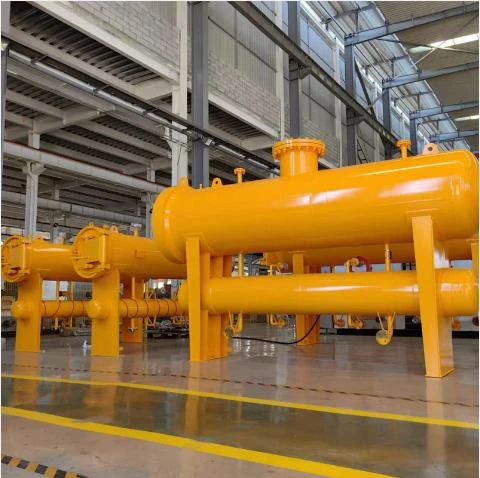
Nov . 10, 2024 03:50
Back to list
Gas Pressure Regulation Station for Safe and Efficient Energy Distribution Systems
The Importance of Gas Pressure Reducing Stations
Gas pressure reducing stations (PRDs) play a crucial role in the distribution of natural gas and other gases used in various industrial applications and residential areas. These stations are essential for ensuring that gas is supplied at a consistent and safe pressure level, protecting both infrastructure and consumers. In this article, we will explore the functionalities, significance, and operational considerations of gas pressure reducing stations.
What is a Gas Pressure Reducing Station?
A gas pressure reducing station is a facility designed to reduce the high pressure of gas in a pipeline to a level that is suitable for safe use across various applications. Natural gas, which is transmitted through extensive pipeline systems at very high pressures, must be regulated before it can be safely delivered to homes, industries, and commercial establishments. PRDs achieve this by utilizing pressure regulators, which automatically adjust the pressure down to pre-set levels, ensuring that the gas delivered is within safe usage parameters.
Why are Pressure Reducing Stations Important?
1. Safety One of the primary roles of pressure reducing stations is to ensure safety. High-pressure gas can pose risks including explosions or leaks if not managed properly. By reducing the pressure to a safe and usable level, PRDs mitigate these risks effectively.
2. Operational Efficiency PRDs enable the efficient operation of gas appliances and industrial equipment. Each application has specific pressure requirements, and uninterrupted gas supply at the correct pressure ensures optimal performance of heating systems, machinery, and other equipment.
3. Regulatory Compliance Many countries have regulations regarding the safe transportation and distribution of gas. Pressure reducing stations help utility companies comply with these regulations by ensuring that gas is delivered within the required pressure limits.
gas pressure reducing station

4. Cost-Effectiveness PRDs can lead to lower operational costs. By ensuring that gas is delivered at the correct pressure, these stations can minimize the risk of equipment failure, which could lead to costly repairs and downtime. Moreover, effective pressure regulation can optimize energy consumption, thereby reducing overall costs.
5. Environmental Protection By regulating the flow and pressure of gas, PRDs can help prevent leaks that contribute to greenhouse gas emissions. Efficient gas distribution aligns with environmental goals and regulations regarding emissions and pollution.
Operational Considerations for Gas Pressure Reducing Stations
While gas pressure reducing stations are integral to safe gas distribution, their operation requires careful consideration of various factors. Regular maintenance and inspections are crucial to ensure the reliability and efficiency of these systems. Operators need to monitor for potential failures in pressure regulators and related components, as any malfunction could lead to safety hazards or service disruptions.
In addition, advancements in technology have introduced smart monitoring systems that can predict maintenance needs and optimize performance. These systems use real-time data to adjust pressure settings and ensure a steady supply of gas, enhancing the overall reliability of the gas distribution network.
Conclusion
Gas pressure reducing stations are indispensable elements of the gas distribution infrastructure. Their ability to regulate pressure safely and efficiently ensures that natural gas can be used effectively across various applications while minimizing risks to safety and the environment. As technology continues to evolve, the efficiency and capabilities of PRDs will undoubtedly improve, leading to safer and more sustainable gas management practices. Proper attention to their maintenance and operation will be vital in meeting the increasing demands for gas while protecting both consumers and the environment.
Latest news
-
Safety Valve Spring-Loaded Design Overpressure ProtectionNewsJul.25,2025
-
Precision Voltage Regulator AC5 Accuracy Grade PerformanceNewsJul.25,2025
-
Natural Gas Pressure Regulating Skid Industrial Pipeline ApplicationsNewsJul.25,2025
-
Natural Gas Filter Stainless Steel Mesh Element DesignNewsJul.25,2025
-
Gas Pressure Regulator Valve Direct-Acting Spring-Loaded DesignNewsJul.25,2025
-
Decompression Equipment Multi-Stage Heat Exchange System DesignNewsJul.25,2025

